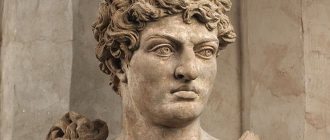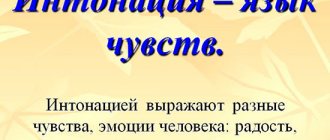It is believed that ancient rhetoric appeared after the sunny city of Syracuse, in Sicily, in 465 BC. e. Tyranny was overthrown and democratic rule was established, under which everyone can and should participate in governing the state - and for this one must be able to speak competently and convincingly. The first sophists, Tisias and his student Corax, wrote the first textbooks on rhetoric so that every citizen could quickly and effectively master the skills of public speaking.
The further development of rhetoric is associated with the spread of the intellectual movement of the Sophists, the most significant representatives of which were Gorgias, Protagoras, Hippias, Prodicus, Antiphon, Thrasymachus. These traveling encyclopedist teachers around the same time made rhetoric the basis of their educational program and taught their knowledge to the golden youth of the Greek city-states for a lot of money, preferring to tour in Athens, the richest Greek city at that time. Thus, one lecture by Prodicus cost 50 drachmas, and a full course of Protagoras cost 10 thousand drachmas. For comparison: the daily salary of an experienced worker or sailor on a ship was 1 drachma, a heavily armed hoplite warrior received 2 drachmas a day, an ox at that time cost 50–100 drachmas, the fine for dishonoring a free woman was 100 drachmas, and a slave could be bought for as many.
It should be noted that the word “rhetoric” itself was not used by sophists, philosophers, or other writers of that time. It comes from the Greek word ῥῆμα (rema), meaning "speech", "word", "saying" or "verb" in the grammatical sense. In 395 BC. e., after the educational boom of sophistry, the philosopher Plato writes the dialogue “Gorgias”, named after the famous sophist and dedicated to rhetoric, where the phrase ῥητορική τέχνη - rhetorical art (the word τέχνη, or techne, from which the word “technology” comes) is first introduced in antiquity, any skill in general was designated - be it culinary art, the art of a helmsman, a doctor, etc.). After this, with the light hand of Plato, the word “rhetor” (ῥητῆρ) begins to denote a politician professionally trained in persuasive speeches: there were no politicians in our understanding in Greece, and the interests of the people and the state were in the People’s Assembly (ekklesia) and the State Council (bule) represented by rhetoricians, or orators (you just need to remember that the last word is not Greek, but Latin, it appeared much later). Such a rhetorician-politician could be any free citizen who had reached about thirty years of age - by this time the young Greek most often already had time to start a family and a household, take part in wars, morally “grow up” and, therefore, become more deeply integrated into the social communication of the polis, basically which was primarily the spoken word.
Although Plato introduced the word “rhetoric” into intellectual and political circulation, he despised rhetoric itself with every fiber of his soul, because he believed that, not knowing the essence of things, it tells people not what really is, but exclusively what they are want to hear, misleads them and leads them to destruction.
Plato had his reasons for not liking rhetoric: rhetorical practice comes from democracy, and democracy, as we know, destroyed Socrates, his favorite teacher.
However, Plato's favorite student Aristotle, to whom truth was dearer than Plato's friend, not only developed rhetorical theory, but raised it to unprecedented heights. Aristotle’s famous work is called “Rhetoric,” and in our pocketbooks it is most often published together with his “Poetics,” dedicated to the theory of art.
With Plato (or rather, even with Socrates), the centuries-old dramatic confrontation between two fundamental cultural discourses - rhetorical and philosophical - begins, and since, as Whitehead wrote, all subsequent philosophy is only a marginal commentary on Plato, then, as you might guess, this rivalry continues until now: some philosophers and even entire eras affirm the primacy of the rhetorical principle, others - the philosophical.
Isocrates, a contemporary of Plato and a student of Gorgias and Tisias, followed the path of further improvement of rhetorical practice. Around the same time that Plato at the Academy built an educational program on the basis of his philosophy, Isocrates at his school made rhetoric the basis of teaching. However, this was not just a school of oratory, if only because Isocrates himself was never an orator; he naturally had a very quiet voice and was terrified of speaking in front of a large audience. He was what we would now call a speechwriter, and the Greeks called such people “logographers,” that is, speech writers, and through his speeches Isocrates not only taught students to speak beautifully, but tried to instill in them moral qualities so that future politicians would not only eloquent, but also virtuous.
Isocrates, unlike his colleague and competitor Plato, understood rhetoric quite neutrally: for him it is neither useful nor harmful, and responsibility for its benefits or abuses falls on the one who practices, and not on the one who teaches. Isocrates said:
“...Things by their nature do us neither good nor harm, but the way people use and apply [things] is the cause of everything that befalls us.”
By the way, Aristotle understood rhetoric in a similar vein, who, before enrolling in studies with Plato, studied rhetoric for some time with Isocrates.
This time is the 5th and 4th centuries BC. e., is considered the golden age of oratory: it was then that the masters created who later entered the great canon of ten Attic orators. Of course, we won’t be able to talk about them all, so we’ll simply list them by name: Antiphon, Andocides, Lysias, Isocrates, Iseus, Aeschines, Lycurgus, Demosthenes, Hyperides, Dinarchus.
Introduction
Public speech was the most common genre among educated people of antiquity. The knowledge that gives people mastery of oral speech, which occupies the minds and hearts of people, was called rhetoric. In terms of the degree of influence on the development of later European literature, rhetoric, which still played a significant role in the Middle Ages, in modern times gave way to other genres of literature that determined the nature of the national cultures of Europe for many centuries. It should be especially noted that of all types of artistic expression in the ancient world, public speech was most closely connected with contemporary political life, the social system, the level of education of people, way of life, way of thinking, and finally, with the peculiarities of the development of the culture of the people who created this genre.
The purpose of this work is to reveal the topic of “oratory in ancient Rome.” The following tasks are defined:
Consider the emergence of oratory in ancient Rome;
Familiarize yourself with the rhetoric of Cicero.
Attention!
The information presented below has no scientific basis.
Nails
- a unique gift from nature. They perform many useful functions. For example, they protect your fingertips from damage. Thanks to this protection, the fingertips can remain the most sensitive and practical part of the body. Additionally, nails help perform various functions in life.
For the female half of humanity, nails can also serve as a fashionable decoration, harmoniously complementing the image.
Therefore, you need to keep your nails in order and follow basic rules for caring for them.
Healthy nails grow approximately 2–4 mm per month. Therefore, they have to be constantly trimmed. The condition and appearance of nails, as well as the speed of their growth, directly depends on how correctly they are trimmed. Below are tips on how to properly cut your nails at home.
How to cut your nails correctly
A properly formed nail should be rounded and not cause discomfort when doing household chores.
Typically, nails are cut to follow the natural shape of your fingers, so the ideal shape for your nail will be one that closely follows the shape of your fingertips.
The shape of the nail must be rounded, otherwise sharp edges can lead to ingrown nails or excess skin growths in the corners. Those. You only need to cut your nails correctly in a straight line, and file the ends so that the nail never grows in.
Don't cut your nails too short. After a while, the fingertips will begin to expand and take on a rough shape. In addition, there is a risk of infection under the nail. The minimum length of the nail can be determined by the visible white rim at the very tips.
If you prefer to wear long nails, don't forget to regularly clean the skin under your nails, as this area collects a record amount of bacteria.
It is recommended to cut your nails with special nail scissors. To cut nails, use special tweezers or straight scissors, not curved ones. The first thing you need to pay attention to is the cleanliness of the instrument. Before use, they need to be wiped with alcohol. Hands should be washed well with antibacterial or good soap and nails should be steamed (they will be easier to cut). There should be good lighting where you will cut your nails.
To get a smooth, even line, you need to grab the nail with the tips of the scissors and move in small steps. This way the shape of the nail will be more neat. It is convenient to use tweezers in hard-to-reach places.
The cut surface should be flat without protruding ends and smooth. Of course, it is more convenient to cut your nails with tweezers. If your nails have a complex shape or are too wide, cutting your nails becomes more difficult. To avoid damaging the skin and the integrity of the nail, place the bottom edge of the tweezers to the bottom of the nail and begin to carefully cut without pressing.
If the nail groove is depressed or part of the nail is ingrown, then it is difficult to remove them with scissors. Here it is best to use tweezers with a straight cutting edge. Also, if you need to cut off an ingrown nail, you can try using angled nail clippers.
Carefully remove any protruding pieces of skin around the nails. After cutting your nails, they need to be cleaned and polished with a diamond file so that not only the edges are smooth, but the entire nail plate is smooth. Polish the nails from the corner to the top.
It is correct to start cutting your nails from your hands, as they are more hygienic, and then move on to your feet. After cutting your toenails, it is recommended to rinse the scissors or tweezers. You can use (large) straight scissors to trim your toenails, but the scissors or hand clippers above will also work. The main thing is that the cutting tool is sharp and in good working order.
Trim your toenails correctly and never wear tight, narrow or uncomfortable shoes, and you will not have a problem with ingrown toenails. Among other things, uncomfortable and tight shoes cause crooked toes for life.
When can you cut your nails and in what phases of the moon?
To ensure that the nail plate grows strong and healthy, it is advisable to trim your nails on favorable days. Nails will grow faster if you trim them during the new moon or during the waxing moon phase.
The most successful days for cutting nails will coincide with the lunar calendar for cutting hair.
Information sources:
- beautydream.ru - nail cutting; how to cut your nails correctly and when you can cut your nails;
- naraschivanie-nogtej.ru - how to properly cut your nails yourself at home.
Rhetoric and oratory
Oratory is the art of public speaking for the purpose of persuasion. This is a harmonious combination of rhetoric, acting techniques and psychological techniques. Even in ancient times, the vocation of an orator was considered to teach and instruct listeners.
For ancient Rome, Aristotle remained the highest authority in the field of rhetoric, however, the Romans contributed a lot of valuable and noteworthy things to this science and especially to the practice of oratory. First of all, their merit lies in the development of techniques for composing speeches, analyzing arguments, arguments and improving the style and beauty of speech.
The efforts of ancient Roman orators were concentrated around the problems of political struggle in the Senate, at popular assemblies, as well as judicial proceedings. Therefore, they were little interested in theoretical issues of argumentation and rhetoric in general. The only exception to this was, perhaps, the outstanding orator of ancient Rome, Marcus Julius Cicero, who invariably emphasized in his writings the need to combine eloquence with persuasiveness, rhetoric with philosophy. True, the philosophical views of Cicero himself cannot be called consistent and monistic, since he tried to combine in his worldview the views of such incompatible ancient schools as the Stoics (logic, physics and ethics), the Peripatetics (the study of language in motion) and the Academicians. In rhetoric, Cicero tried to combine, on the one hand, the philosophical principles of Plato and Aristotle, and on the other, purely practical techniques and recommendations coming from Socrates. However, his main attention is not paid to philosophical principles. He is most interested in the applied side of rhetoric, its skillful use in the Senate, people's assembly, and court.
The Roman Empire: Decline of Style, Praise of the Fly and the Emergence of Love Novels
After the death of Cicero in 43 BC. e. a gradual departure from his rhetorical theory towards greater formalization begins, and with the era of the Principate of Augustus and the Empire, rhetorical schools began to flourish and, at the same time, the style of eloquence deteriorated. The main method of rhetorical teaching in these schools was recitations, speeches on fictitious topics of two types: counterversions - speeches about a fictitious problematic legal case, when there is a contradiction either between laws, or between law and feeling, etc., and suazoria - exhortations and also fictitious speeches addressed to a hesitant person who cannot make a decision. The form of speeches began to prevail over the content, the pursuit of effectiveness overshadowed credibility. It was in this form that the imperial school of rhetoric existed almost until the fall of the Roman Empire in 495 AD. e. Young speakers, leaving school and getting to a real court hearing, turned out to be completely unprepared; their education had nothing to do with real court cases. Accordingly, such a school began to be sharply criticized by those who believed that oratory and language needed to be restored to the splendor of Cicero's time. As a result, something like the motto “back to Cicero” was proclaimed. From all sides (Petronius, both Senecas, Longinus “On the Sublime”) the sophisticated simplicity of the new eloquence and the separation from Ciceronian ideals were criticized. They studied Cicero, of course, but they understood that a return to him in the current conditions was no longer possible, since the republic no longer existed.
So, at the end of the 1st century AD. e., more than a century after the death of Cicero, the famous Roman rhetorician Marcus Fabius Quintilian writes a large text “On the Education of the Orator” - the longest work on rhetoric preserved from Antiquity. He ran a school of rhetoricians with funds allocated by Emperor Vespasian, and was the tutor of his son Domitian. The restoration of Cicero's classics began. Quintilian tries to comprehend the ancient expression of Marcus Porcius Cato the Elder vir bonus dicendi peritus
- “a worthy man is skilled in speeches.” In his opinion, in order for a man to be worthy, he must be taught morality from infancy, and in order for him to be skilled in speeches - from childhood, even before rhetoric, he must be taught grammar, music and in general everything that is possible, and then eloquence according to models the best ancient speeches and, first of all, Cicero.
Cicero himself did not attach much importance to schools and said that he was raised not in a stuffy rhetorician’s closet, but in the air of the Academy, and in his youth he gained experience in the homes of respectable and experienced orators and senators. Quintilian believes that school is the basis of education. For Cicero, the main things in teaching are philosophy, history and law, and theoretical rhetoric is secondary. In Quintilian, out of the twelve books of his huge work, nine are devoted to a scrupulous analysis of rhetorical theory. For Cicero, philosophy lies at the heart of rhetoric, for Quintilian - classical literature, and therefore for Cicero the orator is a thinker, and for Quintilian - a stylist. The orator Cicero should be evaluated by the people, the orator Quintilian is a sophisticated and educated connoisseur of literature. Cicero, looking to the future, sees progress in the art of eloquence; Quintilian sees only decline and a short-lived revival occurring in his own time.
A short time after the death of Quintilian, an amazing cultural phenomenon arose in the Roman Empire - the second sophistry, covering the 2nd–4th centuries AD. e. Like many interesting and original things, this sophistry came from the East, from the cities of Asia Minor - Rhodes, Smyrna, Laodicea. Since the political activity of traditional democratic institutions in this era came to naught, the sphere of activity of itinerant rhetoricians-sophists became primarily epideictic (eulogy) speeches and less often judicial apologies (Apuleius, “Apology, or Speech on Magic”). Speeches were read praising the cities visited, the opening of monuments, and local heroes.
A favorite technique is praise-paradox of some insignificant objects or phenomena - a fly, a mosquito, smoke.
Unlike the first sophistry, the second does not pose cognitive problems; it is far from philosophy, but covers the entire area of intellectual activity. The concept of mimesis, introduced into intellectual circulation by Aristotle, completely changes its meaning. If previously mimesis was understood as the imitation of nature through techne and poeisis (that is, through craft and art), now it means only imitation of the second order, imitation of imitation, discourse about discourse. In the first sophistry, being is the effect of speech or rhetoric, but here there is no being at all, but there is only a palimpsest on which something was written, then erased and written again. First of all, the plots of Athenian history were imitated and stylized in declamatory speeches while preserving the Attic dialect.
One of the “first” second sophists was Polemon from Smyrna and the permanent ambassador of this city, an acquaintance of the emperors Trajan, Hadrian and Antoninus Pius. He wrote a recitation in which the fathers of the two heroes of the Battle of Marathon argue which of their sons deserved greater glory. In his performance, he actively used artistic methods, attracting attention and influencing the listener with the expressiveness of emotions.
Polemon loved rhetoric and speech so much that, as Philostratus writes, when his friends were mourning the dead, he cried out loudly: “Give me the body, and I will recite!”
Polemon's student was Herodes Atticus, a friend of Emperor Hadrian and Antoninus Pius. The latter appointed him teacher to the future emperors Marcus Aurelius and Lucius Verus (co-emperor), and then made him consul in 143. Herodes Atticus became the first Greek to receive such a high position in Rome. His speech has been preserved, encouraging the Spartans to come to the aid of the Thessalians against the Macedonians: Herod imitates Thrasymachus of Chalcedon in it, so skillfully that until the 19th century this speech was considered the work of a Chalcedonian.
A student of Herodes would be Aelius Aristides from Smyrna (2nd century AD), from whom many speeches have come down to us, fifty-five. In his speech “In Praise of Rome,” he praises imperial policies. Aelius Aristides was also a staunch supporter of Atticism and fought for the revival of the Attic dialect in literature. In his speech “Against those who are like dancers” (Κατα των έξορχουμένων), he reminds that the rhetorician must strive for precision and accuracy of style, which is achieved only by imitation of classical Greek writers.
The above writers are, so to speak, pure rhetoricians; they come from the richest families, representatives of the elite. But there was a wave of, let’s say, “philosophizing” rhetoricians-sophists, but there were much fewer of them. One of the prominent representatives of this wave is Dion Chrysostomos (40–115 AD), who combined in himself a wandering orator and a Cynic philosopher. Emperor Domitian sent him into exile because of his participation in a conspiracy, and he went to wander (he got all the way to Scythia), earning a living by daily work and preaching among the poor. Under Nerva and Trajan, he was returned to Rome and again took up public activities. Dion’s favorite oral literary genre was the Cynic diatribe (διατριβή - exercise), that is, a philosophical monologue with ethical content interspersed with dialogue with an imaginary interlocutor.
Dion was a staunch opponent of slavery and admired the simplicity of the ancient Cynics, especially Diogenes of Sinope (yes, the one who lived in a barrel). In Dion's speeches, the idea of true beauty is associated with moral perfection. It is interesting that, like Plato, his beauty is embodied in a youthful appearance. A supporter of autocracy, Dion opposes tyranny, which, in his opinion, destroys beauty and virtue. Discussions about the wonderful poet and philosopher are inseparable from attacks against ancient and new tyrants. What is important to Dion is the ideal of a free citizen, whose words do not diverge from his thoughts, who enlightens citizens without expecting reward.
Nevertheless, the focus of the second sophistry remains exclusively on problems of language and style. As for genre novelty, much attention was paid to school genres - descriptions (ekphrasis) and the epistolary genre (letters). It was from this era that many forged letters have come down to us, supposedly belonging to Themistocles, Socrates, Diogenes and others. Over time, instead of philosophical content, everyday life begins to appear in the letters, which comes from the new Attic comedy and love lyrics. Entire collections of such fictitious letters appear, one of which was compiled, for example, by Philostratus.
The real innovation of that time was the development and development of the Greek love story.
Both in letters and in the novel, rhetoric went beyond the scope of school rhetorical education. From this time, five completely preserved canonical love novels have survived (only scattered papyrus fragments have survived from the 3rd–2nd centuries BC): “Chareus and Callirhoe” by Chariton from Aphrodisias, “The Ephesian Tale” by Xenophon of Ephesus (beginning of the 2nd century), “Leucippe and Clitophon” by Achilles Tatius (late 2nd century), “Daphnis and Chloe” by Longus (2nd century) and “Ethiopica” by Heliodorus of Emesa (3rd–4th centuries).
Almost all novels, with the possible exception of Daphnis and Chloe (they are slaves, the plot is based on the innocence and timidity of the heroes), have the same narrative matrix - a handsome young man and a girl fall in love with each other, then they are separated by fate, separated they endure all kinds of torment and misfortune (captivity from robbers, kidnappings, shipwrecks, sale into slavery, threat of execution, etc.), then after all these ups and downs they meet, recognize each other and find the desired happiness.
These Greek novels are opposed by “The Golden Ass,” written in Latin, a novel by the famous Apuleius (2nd century), one of the most famous writers and rhetoricians of the era, a Platonist philosopher from Madavra (modern Algeria). Apuleius was a man of his time - he received an excellent education, studied in Carthage and Athens, studied philosophy and rhetoric, history, was a poet, and a lawyer. An example of oratory is his apology, written in response to the accusation of practicing magic brought against him. Other prominent representatives of the second sophistry include Flavius Philostratus, Athenaeus, Aulus Gellius, Diogenes Laertius and Libanius.
This marks the end of the era of ancient rhetoric and the beginning of medieval rhetoric, which is based on the struggle between paganism and the new Christian religion, and its main genres will be sermons and theological exhortations, this is largely another story.
Rhetoric of Cicero
In the theory of knowledge, Cicero tends to be skeptical, believing that there is no criterion for distinguishing real ideas from unreal ones. He considers questions about the highest good, about virtues as the only source of happiness, and strives for perfection. This desire corresponds to four virtues: wisdom, justice, courage, moderation. His philosophical views formed the basis of his views on oratory.
What are Cicero's views on oratory? Cicero's theory of eloquence occupies a middle position between Asianism (a direction in Greek and Roman rhetoric, close consonances to rhyme) and moderate classical Atticism. In the treatise “On the Orator,” he chooses a free form of philosophical dialogue, which allowed him to present the material in a problematic, debatable way, citing and weighing all the arguments for and against. Cicero blames the fact that eloquence has the fewest representatives among all the sciences and arts. And this is no coincidence. In his opinion, there are few truly good speakers, because eloquence is something that is more difficult than it seems. Eloquence is born from many knowledge and skills. “In fact,” he writes, “here it is necessary to acquire a wide variety of knowledge, without which fluency in words is meaningless and ridiculous; it is necessary to give beauty to the speech itself, and not only by selection, but also by the arrangement of words; and all the movements of the soul with which nature has endowed the human race must be studied to subtlety, because all the power and art of eloquence must be manifested in order to either calm or excite the souls of listeners. To all this must be added humor and wit, education worthy of a free man, speed and brevity both in repelling and attacking, imbued with subtle grace and good manners. In addition, it is necessary to know the entire history of antiquity in order to draw examples from it; familiarity with laws and civil rights should also not be neglected. Do I still need to expand on the performance itself, which requires monitoring body movements, gestures, facial expressions, and sounds and shades of voice? Finally, what can I say about the treasury of all knowledge - memory? After all, it goes without saying that if our thoughts and words, found and considered, are not entrusted to her for safekeeping, then all the merits of the speaker, no matter how brilliant they may be, will be in vain.”
Cicero believes that the basis of oratory is, first of all, a deep knowledge of the subject; if behind the speech there is no deep content, assimilated and cognized by the speaker, then verbal expression is empty and childish chatter. Eloquence is an art, but the most difficult of the arts.
The characters in his dialogue, whose authority Cicero supported his opinion, were the teachers of his youth, the best orators of the previous generation, Licinius Crassus and Mark Antony, as well as their students Sulpicius and Cottus.
He supports Plato and Aristotle in the fact that impressive speech, responding to the feelings and thoughts of the listeners, constitutes the inalienable property of the speaker. These judgments reflected the psychological direction of the study of oratorical speech: “Who, for example, does not know that the highest power of the orator is to inflame the hearts of people with anger, or hatred, or sorrow, and from these impulses again turn to meekness and pity? But this can only be achieved with eloquence by someone who has deeply understood human nature, the human soul and the reasons that make it flare up and calm down.”
What are the most important conditions for a speaker?
Firstly, natural talent, alertness of mind and feelings, development and memorization;
Secondly, the study of public speaking;
Thirdly, exercises (practice).
Actually, there is nothing new in these statements, since Aristotle wrote about this. Nevertheless, Cicero tries to synthesize previous theories, comprehend them and, on their basis, create a generalized theory of oratory.
In the first part of the work “On the Orator,” Cicero tries to create the ideal of an educated orator, an orator-politician who would be both a philosopher and a historian, and would know the law. “If we are talking about what is truly excellent,” writes Cicero, “then the palm belongs to the one who is both learned and eloquent. If we agree to call him both an orator and a philosopher, then there is nothing to argue about, but if these two concepts are separated, then philosophers will be lower than orators, because a perfect orator has all the knowledge of philosophers, and a philosopher does not always have the eloquence of an orator; and it is a pity that philosophers neglect this, for it, I think, could serve as the completion of their education.” This is how the image of an ideal speaker arises, educated and thereby rising above ordinary consciousness, above the crowd, capable of leading it behind him.
And in other treatises, Cicero constantly raises the question of the relationship between rhetoric and other sciences, in particular philosophy. Each time he steadily comes to the principle of subordinating all sciences to the main oratorical goal. His rhetorical treatises clearly show his attitude towards philosophy and law as part of oratorical education and upbringing. One question divided philosophers and rhetoricians: is rhetoric a science? Philosophers argued that rhetoric is not a science, rhetoricians argued the opposite.
Cicero notes that all other sciences are closed, each in itself, and eloquence, that is, the art of speaking intelligently, coherently and beautifully, does not have any specific area, the boundaries of which would fetter it. A person who takes up the art of oratory must be able to say decisively about everything that may arise in a dispute between people, otherwise he cannot encroach on the title of orator.
Cicero, according to the tradition adopted in Greece, distinguishes three types of speeches:
speaking at meetings;
speaking in court in civil cases and proceedings;
eulogies.
This is how, according to Cicero, the formation of an orator occurs: “So, we can say: to a gifted person who deserves support and help, we will pass on only what experience has taught us, so that under our leadership he can achieve everything that we ourselves have achieved without a leader; and we are not able to teach better than this.” The main thing is the gift of speech, which must be constantly developed.
The speaker's duty is to: find something to say; arrange what was found in order; give it verbal form; confirm all this in memory; pronounce. As we can see, Cicero adheres to the established classical scheme. In addition, the task of the speaker is to win over the audience; state the essence of the case; establish a controversial issue; reinforce your position; refute the opponent's opinion; in conclusion, to give shine to your positions and finally overthrow the enemy’s positions.
The speech should be as exciting as possible, make the greatest possible impression on the audience and be supported by as many arguments as possible, because arguments are truly enormous and important material.
The philosopher speaks in detail about the beauty of speech, believing that the beauty of speech consists primarily of a certain general freshness and richness: its tenderness, its learning, its nobility, its captivatingness, its grace, its sensitivity or passion, if necessary - all this refers not to its individual parts, but to its entirety. But the flowers of words and thoughts, as if enhancing speech, should not be scattered evenly throughout it, but arranged selectively, just as decorations and sparkles are placed on some outfit. The general tone of speech should be chosen such that it retains the attention of the listeners to the greatest extent and which not only delights them, but delights them without satiety.
Marcus Julius Cicero created his own style and demanded a reasonable use of the colors of eloquence. He demonstrated deep insight into the essence of oratory, creating an oratory theory based on his rich experience. A brilliant theorist, he summarized and critically rethought the views of theoreticians and practitioners of oratory, through careful analysis, compared different points of view, and created his own theory.
The Age of Hellenism: rhetoric as a school discipline
In 338 BC. e. A tragic event for Greek independence occurred - the Battle of Chaeronea was lost, and Greece fell under the rule of first King Philip of Macedon, then his son Alexander, and after the death of the latter - his diadochi (successors). The role of the people's assembly, the main arena of eloquence, is rapidly declining at this time due to the lack of political independence, and, consequently, the quantity and quality of political speeches is declining. The Hellenistic era begins.
In all corners of Alexander’s vast and fragile empire, Greek culture began to spread, which, combining with the local cultural characteristics of a variety of countries, formed an absolutely unimaginable and hitherto unprecedented cultural fusion. Among the linguistic changes was the emergence of the pan-Greek dialect Koine, which first became the common dialect in the armies of Alexander the Great, and eventually became the diplomatic and literary language of the entire Mediterranean. With the spread of the Greek language, the spread of Greek education begins, the most important element of which is the so-called paideia - the education of social, moral and political virtues. The division of paideia, common to the global world at that time, simplified communication and made it more effective. Subjects could count on understanding from the ruler (most often a Greek) if they shared the same values as him. Something like the unification of education according to the Greek model is happening. In order to successfully transmit Greek culture, rhetoric and grammar schools begin to open throughout the Mediterranean. Grammarians taught Greek language and literature, rhetoricians taught the art of speech.
Almost no recorded speeches or rhetorical works survive from the Hellenistic era. This, however, does not mean that rhetorical issues were not being developed at that time.
Thus, Theophrastus, a student of Aristotle, as ancient authors report, wrote about twenty essays on rhetorical topics, which, alas, were all swallowed up by merciless time. It is difficult to say to what extent he followed the theories of his teacher: Quintilian, who will be discussed below, reports that Theophrastus put forward positions that differed from the ideas of Aristotle. One way or another, most often ancient authors referred to his essay “On Style.”
The unsystematized education that existed in Athens during the classical period (V-IV centuries BC) was streamlined in the Hellenistic era and became the so-called encyclopedic, or general education, which included rhetoric (encyclopedia from ἐγκύκλιος παιδεία - “circular education "). Such education occupied a middle stage between primary (learning to read and write) and something like higher education (study of philosophy). His circle included grammar, geometry, astronomy, literature, music, rhetoric and dialectics. These are the famous seven liberal arts (septem artes liberales), which began to be practiced sporadically by the Sophists and which found their final form already in Rome, and then in the form of trivia and quadrivium they passed into the system of medieval university education.
Most often, these disciplines were taught by one or two teachers, and only rich people in big cities could afford to hire a separate rhetoric teacher, geometry teacher, etc.
3conclusion
The orators and theorists of eloquence of Ancient Rome were able to penetrate the secrets of the word, expand the boundaries of its knowledge, put forward theoretical and practical principles of oratory as an art, based on their own rich experience and on the analysis of numerous brilliant speeches of famous speakers. Their works contain such an interesting and deep analysis of the art of persuasion that many centuries later, in our days, propaganda specialists study and find there ideas that were considered an achievement only of modern times.









